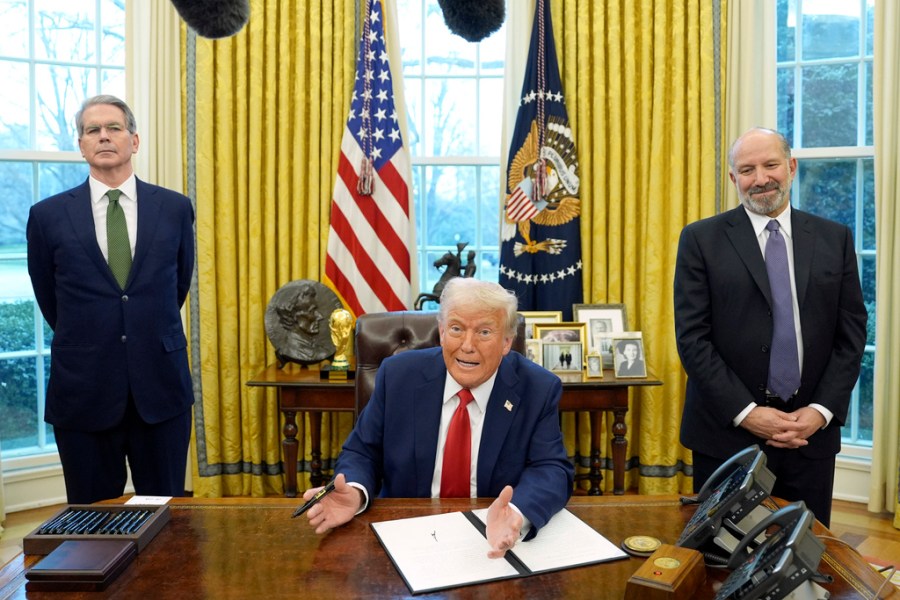
President Donald J. Trump hit the ground running on Jan. 20, his first day as president, signing executive orders in the Oval Office. All told, he issued 45 executive orders on that day and dozens more later that week, including one rescinding 78 orders promulgated by his predecessor, Joe Biden.
The executive order that intrigued me most was not unexpected. Trump had long boasted about creating a Department of Government Efficiency to carry-out his goals of downsizing government by 2 million workers and $2 trillion in spending. One of his first executive orders on opening day gave DOGE official status in the Executive Office of the President with billionaire Elon Musk in charge.
The way in which it was constituted is especially fascinating. According to Trump’s executive order, DOGE would simply replace an agency created by President Barack Obama back in 2014 in the wake of the botched rollout of the HealthCare.gov website. The Obama office was named the United States Digital Service. Trump’s order simply renamed it the United States DOGE Service. That deft sleight-of-hand can at least be credited as being a first win for government efficiency, by collapsing two acronyms into one.
While the Obama USDS office was also created in the Executive Office of the President to advise and assist federal agencies in upgrading their IT systems, the new Trump DOGE has much more ambitious aims than simply being a computer help desk. Those additional powers are not specifically spelled out in Trump’s executive order. Unlike the Obama office, Trump’s DOGE is more operational in nature, with the teeth of a pit bull to tear apart the “deep state” of embedded feds and replace them with coteries of MAGA-mites.
The administrator of the new agency, presumably Musk, must oversee and coordinate the appointment of four-person teams in every government agency to formulate and implement their “efficiency” plans.
The real mission became obvious soon enough with a blast e-mail from the Office of Personnel Management offering a federal employee buy-out offer for any government employee to retire. The buyout plan is designed to accelerate early retirements and thereby lessen the number of employees that will eventually need to be fired to achieve the 2 million workforce reduction goal.
The mission became more evident with the threatened shuttering of entire agencies, beginning with the U.S. Agency for International Development. The freezes on government hiring and spending (temporarily withdrawn by Trump) have put everyone in government on tenterhooks.
Another red flag raised by Musk and his cohorts was the controversy over access to the Treasury Department’s Bureau of Fiscal Service, which is charged with dispensing federal payments to millions of Americans for services rendered. Because the payment system’s records include personal as well as work-related data, the Musk team was initially denied access by then acting Treasury Secretary David A. Lebryk, a 36-year career civil servant. Lebryk’s decision was reversed when newly confirmed Treasury Secretary Scott Bessent took office. Lebryk retired at the end of the week. Since then, a lower court has suspended Bessent’s decision.
Trump’s executive order does seem to authorize conditional access to such agency records by the DOGE teams, directing agency heads to take all necessary steps “to the maximum extent consistent with law,” to ensure “USDS has full and prompt access to all unclassified records,” subject to “rigorous data protection standards.” A federal district court judge has upheld DOGE access to Labor Department records on grounds the federal employee groups bringing the suit lacked standing.
It is clear from the Trump-Musk blitz that the president wanted to swiftly impose his will through executive orders before the courts and Congress could catch-up and reverse them. Musk’s DOGE team serves as a “heat shield” for the president when protests reach the boiling point. That’s when Trump leaves D.C. for Mar-a-Lago.
Don’t count on the courts to bail out the agencies. While lower courts have intervened against Trump and Musk with temporary pauses and delays (so far, Trump is just one for seven), the Supreme Court’s 6-3 conservative majority gives anyone pause over how the high court might rule in the latest spate of cases.
If Congress does not push back against being stripped of its core constitutional powers of the purse, it will be left holding nothing but shredded purse strings, and the public will have nothing but fading memories of representative democracy.
Don Wolfensberger is a 28-year congressional staff veteran culminating as chief-of-staff of the House Rules Committee in 1995. He is author of, “Congress and the People: Deliberative Democracy on Trial” (2000), and, “Changing Cultures in Congress: From Fair Play to Power Plays” (2018).












